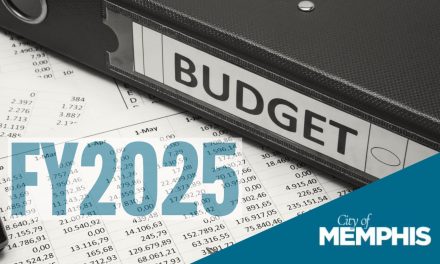We have written for several years that the budget process for City of Memphis has become more and more about finding the best options from a list of poor ones.
Those previous years may be seen soon by city officials as the good old days, because this year, the options are between bad or worse. The forces that have made city budgeting increasingly difficult since the Great Recession seem to have coalesced to make this a watershed year for city government, regardless of what the final budget looks like.
It was obvious from trend lines two or three years ago that City of Memphis budgeting was going to hit a wall within years, but with the addition of the demand for a $70 million a year in funding for the pension system, this year’s process moves the forecast from extremely difficult to nearly impossible. There are no accounting devices, no stopgap ideas, clever calculations, or painless strategies that can avert the ugly realities that confront city budgeters this year.
There is rarely any drama in local government that rivals the drama of a tough budget year, but this year may be the Citizen Kane of city budget hearings (the curtain rises on Tuesday when Memphis Mayor A C Wharton’s presents his budget proposal to Memphis City Council). There are strong opinions on City Council that the $70 million gap for the pension system’s annual required contribution (ARC) should be closed in only two years while State of Tennessee officials have said that the city administration is more inclined to closing the gap in five years. Contrary to published reports that it was state officials who first notified Memphis officials of its looming pension crisis, it was in fact the Strategic Business Model Assessment Committee chaired by Memphis businessman Doug Edwards that did so back in December, 2010.
It’s Where The Money Is
Regardless of the final number of years, it is a devastating reality because at a time when City of Memphis has seriously underfunded services and equally serious capital needs, $70 million a year needs to be found in the city budget and moved to the pension account for the foreseeable future. Looming larger and larger in the budget process are the recommendations in the city’s five-year fiscal plan, because it’s hard to imagine that the search isn’t on for any savings that can be applied to the challenges to the next fiscal year.
Remember the story about the bank robber, when asked why he robbed banks, said, “because that’s where the money is.” There’s no question where the money is in the city budget – public safety. It’s where about 60% of the budget and 70% of city employees work are found – in the police and fire divisions.
Between 2006-2012, the number of sworn officers in Memphis Police Department increased by 526, and while MPD responds to about one million calls a year, only about 50,000 are Uniform Crime Report crimes. While there is no correlation between cities’ crime rates and the size of their police department, it is politically perilous to talk about reducing the number of police officers because the public safety card is so often played. It sometimes seems that every suggestion to reduce the workforce in light of the fact that Memphis has more officers and higher crime rates than comparable cities or that there are ways to cut costs, including assigning some duties to less expensive civilians, is met with indignant reactions from police administrators. (These changes were strongly supported by the public in the poll taken in connection with the five-year fiscal plan.)
Suggestions for reducing the number of sworn officers and increasing the number of civilians in MPD are included in the current five-year plan by PFM (but they echo similar recommendations by Deloitte in the 2007 City of Memphis Efficiency Study). Memphis in fact did the exact opposite, increasing the number of officers and cutting the number of civilians.
Real Crime-fighting
Meanwhile, as the budget of the police division climbs, the money had to come from somewhere, and it’s the services located in the neighborhoods – services like parks, libraries, and community centers – which are now underfunded when compared to peer cities. The irony of course is that all of these have roles to play in reducing crime, particularly in providing afterschool opportunities for young people, but City of Memphis’ budget continues to concentrate on suppression rather than a balanced program of suppression, interventions, and prevention that include restorative justice and robust prisoner reentry initiatives.
It’s been said that Memphis doesn’t have a fire department. It has an ambulance department. After all, MFD answers 12 times more ambulance calls than fire calls. The potency of fire station politics was demonstrated in July of last year when North Memphis residents kept a fire station open that by all rights should have been closed. (Recommendations to reduce and consolidate fire stations date back to the 2007 Efficiency Study.)
The size of the workforce for both Memphis Police Department and Memphis Fire Department is higher than comparable cities or than any city in Tennessee. The budgets for public safety have climbed almost $50 million in five years, and today, they are roughly $400 million a year. In other words, if police and fire departments are off limits for efficiencies, Memphians should prepare for their city tax rate to climb and the cumulative tax rate for city and county taxes to crash through the mental barrier of $8.00.
But here’s the thing, there are forces that shape city budgets today that were set in motion decades ago. Essentially, the Wharton Administration and the City Council are still dealing with city facilities that were located and built for a city that no longer exists. After all, within the 1970 city limits of Memphis, there are today 28% fewer people although most city facilities that exist today were sited by then.
Nothing Dense About Budgets
In other words, today, there are fire stations like the one in North Memphis that answer an average of one call a day. The neighborhoods it serves today are dramatically different and have significantly fewer residents than when it was built. Meanwhile, community centers are located in areas that once had high densities, but instead, today have as many as 50% fewer people.
Just think: in 1970, Memphis delivered services over 178 square miles with 623,988 people. The density was 3,500 people per square mile. Today, City of Memphis delivers services over 324 square miles with 646,889 people. The density is 2,053. In other words, because of the mistaken belief that annexation always accrued to the city’s benefit, the size of Memphis has grown by an incredible 82% while density was being sliced by 40%.
With a larger and larger area to serve, it seems to us that Memphis has had less and less over time to spend to continue the same level of high quality that traditional services once had, and a result, some core services are now badly underfunded. For example, Memphis continues to languish near the bottom for cities’ per capita spending (operations and capital costs) for parks and recreation — at $43. The average for large U.S. cities is $73 and Nashville is at $62. The parks department was once considered one of the best systems in the country, but after almost two decades of flat funding, the system today is barely a whisper of what it once was.
9-1-1 for City Services
Another city service once recognized for its excellence – libraries – also struggles to respond to the serious needs of the city. When compared to 20 peer systems, Memphis’ spending is next to last at $23 per capita. Nashville spends $37, Birmingham spends $74, and St. Louis spends $78. To its credit, Memphis City Council recognized the seriousness of the funding crisis last year and increased funding last year to reverse the 21% cut in library hours and staff members. Even with the additional funding, the system only moves up the ranking of per capita funding from #19 to #18 of 20 peer cities.
Sadly, for reasons known only to the city bureaucracy, the libraries’ hours were never increased and the new employees were never hired. As a result, compared to its peer cities, every city library staff member still sees more customers than the average of its 19 peer cities. The peer city average was 9,849 customers per fulltime employee, and the Memphis library average is 14,817.
Meanwhile, MATA needs about $20 million more in yearly funding just to get to the middle of peer cities’ public transit funding.
More than anything, Memphis has a math problem. For those who are always thinking that Shelby County Government must just be better at managing money than City of Memphis, they should just check the numbers. The median value of a house in Memphis is $98,300, and for Shelby County, once the suburbs are added, it’s $135,500. It’s a huge difference in property tax revenues that gives county government a leg-up in budget development.
It’s Math, Not Management
People regularly compare Memphis’ property tax rates to the lower rates in other major Tennessee cities. But that too isn’t about management; it’s about math. If Nashville had the same house prices as Memphis – rather than its $165,000 – its tax rate would be as high as the city-county tax rate here. Or put conversely, if Memphis had the same house values as Nashville, its property tax rate would be half of what it is now – $1.70 rather than $3.40.
Come to think of it, it’s worth mentioning that compared to Nashville or to Shelby County Government or to Germantown, Collierville, or Bartlett, City of Memphis delivers its services at a lower per capita cost.
Back to budgeting, it plays out in City of Memphis within a framework in which the Memphis economy remains lethargic; in which city government operates within one of the most regressive state tax structures in the U.S.; in which $45 million (the equivalent of 45 cents on the city property tax rate) is taken off the top with tax freezes (PILOTs) for big business, and in which the poverty rate climbed 35% from 2000-2010.
All that said, no city official should look for this budget year to bring them much credit for making the hard choices and the tough decisions in an extraordinarily onerous environment. Every budget choice has winners and losers, every decision benefits somebody more than someone else, and every budget action has an equal and opposite reaction.
Volcanic Budget Pressures
The depth of the fiscal challenge this year is likely to be equaled by a similar level of conflict and controversy (the mandate to find $70 million for pensions guarantees it), but operating with a democratic system of checks and balances, it’s a challenge at times to remember this is the way it is supposed to be.
With unions at the ready to attack any changes in the pension system, with retirees ready to do the same with changes to their health benefits, and with unvested employees festering over the proposal to convert to a defined contribution pension system in City of Memphis, no budget process has ever begun with more emotional percolation and political pressure than this one.
It’s widely expected in City Hall that it will inevitably explode. The only question is when.






Can you come do this analysis for Miami? This
Is excellent.
“It’s widely expected in City Hall that it will inevitably explode. The only question is when”.
Better now when the city is still somewhat in control of its own financial destiny as opposed to several years down the road when the decisions are made within the context of bankruptcy proceedings.
I think the city may have reached a point where the potential for such a drastic financial outcome is no longer on the fringe of reality but has become alarmingly real. Considering the local track record, I cannot say that I would expect any of the those involved in the process to realize just how close we are to such a precipice for at least another budget cycle or two, at which point it will be too late to avoid.